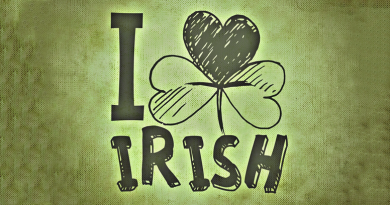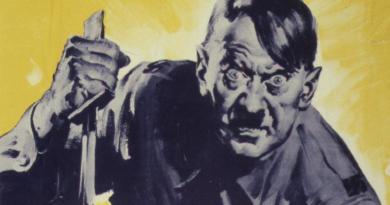When studying the art, literature and legends of the human race, it can sometimes be daunting to take a concept we take to be original and trace it further back than we ever thought possible. Sometimes as a social historian one sees currents that recur time and time again in the memetic ocean of man's consciousness, and we wonder what drives them. They are prototypes, templates; eternal representations of the urges and dreams that exist at our very core. Pathos, Bathos, Vengeance, The Low-born King - all are soldiers in a shapeless army that has marched in our minds ever since we first had thoughts to tell. I feel that after years of research and academic dedication, I have found the Captain of this army. The one glorious archetype within whom is subsumed every other nuance of the human condition. The sum of all human thoughts given form, whom every generation's greatest artists have unknowingly striven to conceive in all their labours. Des O'Connor. Only joking, you cretins, I meant Batman. Not counting the last movie, with Arnie in it. That was shite.
The earliest signs of Batman are to be found in the carvings of the long-vanished Sumerian culture - the first civilised people on earth. Their pictograms interpret the dark knight as a series of wedge shapes and crude drawings, which we can take to mean "man-who-is-a-bat" when we have become bored with trying to interpret them in any meaningful way. The early adventures of this "man-who-is-a-bat" probably revolved around hoarding grain and appeasing the river Gods, or whatever the Sumerians did when they weren't farming dust on some hill in Africa or wherever. In any case the Sumerians were too primitive even to include speech bubbles in their tales, although in later carvings we do begin to see incarnations of Commissioner Gordon as a bearded king, and The Joker as some form of stunted and malevolent hippo.
Moving on from the caped crusader's earliest days, we begin to see signs of Batman again in the wall friezes of Egypt's Old Kingdom tombs, usually dressed in some form of hilarious ethnic garb. Recent finds in a complex of mud-brick monuments on the lower Nile seem to suggest the ceremonial dressing of pharaohs as Batman after death, and perhaps the sneaking in of Robin among the Egyptian pantheon. Historians of the later dynasties have suggested that depictions of the cat goddess Bast were in fact crap attempts at drawing catwoman, and I am inclined to agree - a culture without access to either Michelle Pfeiffer (sp?) or latex catsuits was destined to fail in this respect. Even so, they had a fair go at doing that crocodile bloke from the cartoon series, and I suppose Thoth was a bit like The Penguin but sort of thinner and more judgemental.
In any case, it was not long before the Egyptians passed the torch and allowed another culture to try their hand at writing Batman. Pre-classical Greece was the next culture to earn an honorable mention, with Homer's run of the comic spanning seven thousand issues and describing in immense and fist-bitingly irrelevant detail the homoerotic struggles of Batman against his manly foes. Greek treatment of the myth reached a Zenith with Plato's Batman; an obscure but enlightening series of tales in which the Dark Knight stood around in a toga having loud and overly worded arguments with various villains about the morality of their actions. Euripides' "The Bats" is thought to be the next interpretation of the Batman theme - a rather gaudy satire featuring a chorus of robins and the overthrow of a drunken Commissioner Gordon/King figure by some sort of prototype Jack Nicholson. Inventive stagecraft by Euripides is thought to have originated the concept of the batmobile, and possibly the Utility Belt (although historians have been bitterly split over the latter issue in recent years, since Batman's grappling hook is clearly depicted in a load of graphic novels found buried in Ephesus).
Batman saw many other incarnations during the classical age, with later Greek and Roman cultures constantly wresting control of his story from each other. Many Roman authors are famous for their periods writing Batman, with Ovid's run of the comic being particularly well known for its bizarre mingling of Gotham's police department with an array of lustful and callous Gods, and the controversial episodes chronicling the Joker's transformation into a beautiful flower. The decadent final days of the Roman Empire leave their mark in the Batman comics of the time, with the troubled hero squaring off against Huns, Goths and - in one memorable cross-genre incident - a village of invincible Gauls.
Tomorrow: Batman past the fall of the Roman Empire.
Batman Through The Ages (Part I)
What do you think, did we get it right? Comment here...
Popular Content
WANT MORE FUNNY LIKE THIS? FOLLOW US ON FACEBOOK









